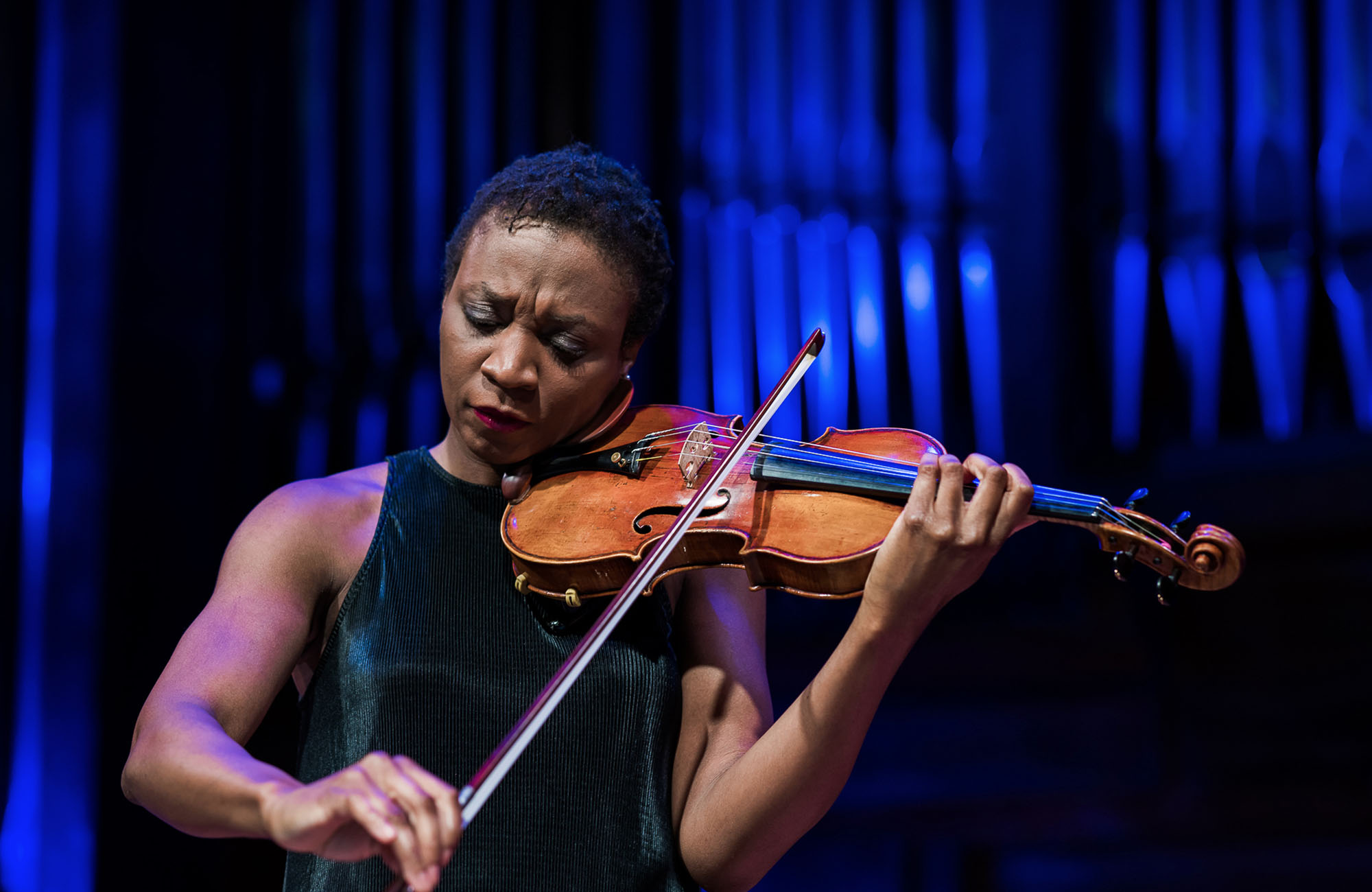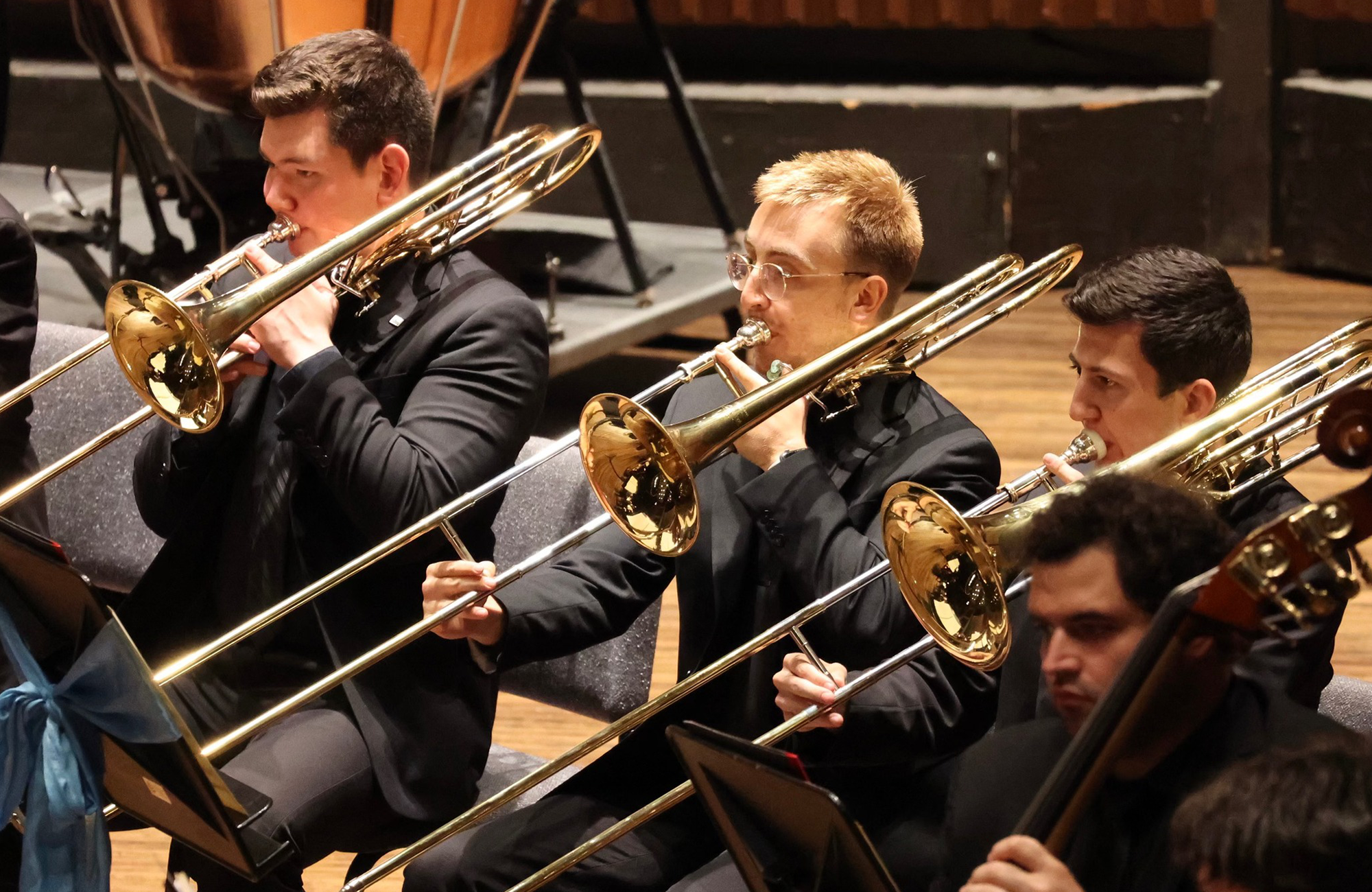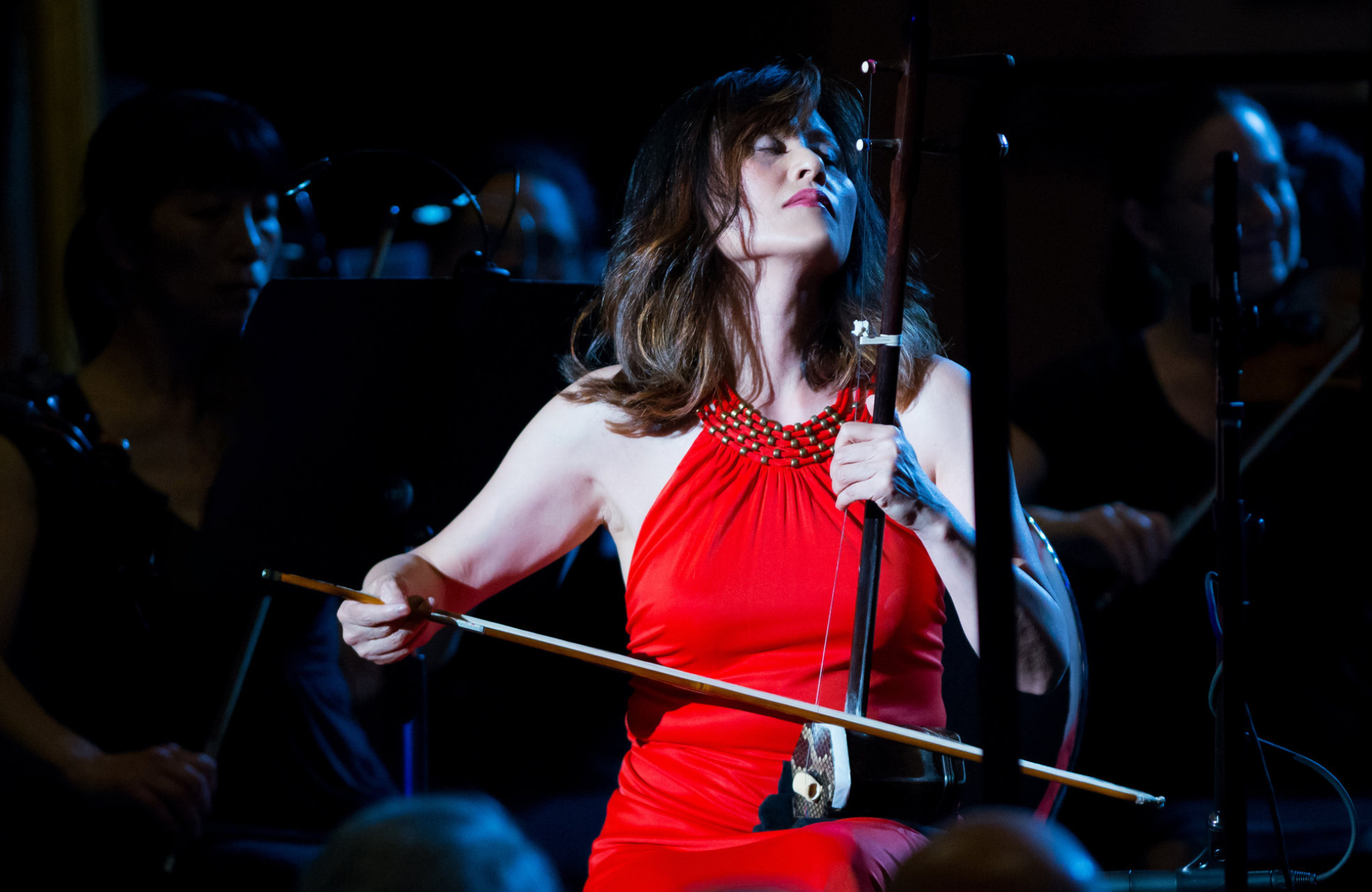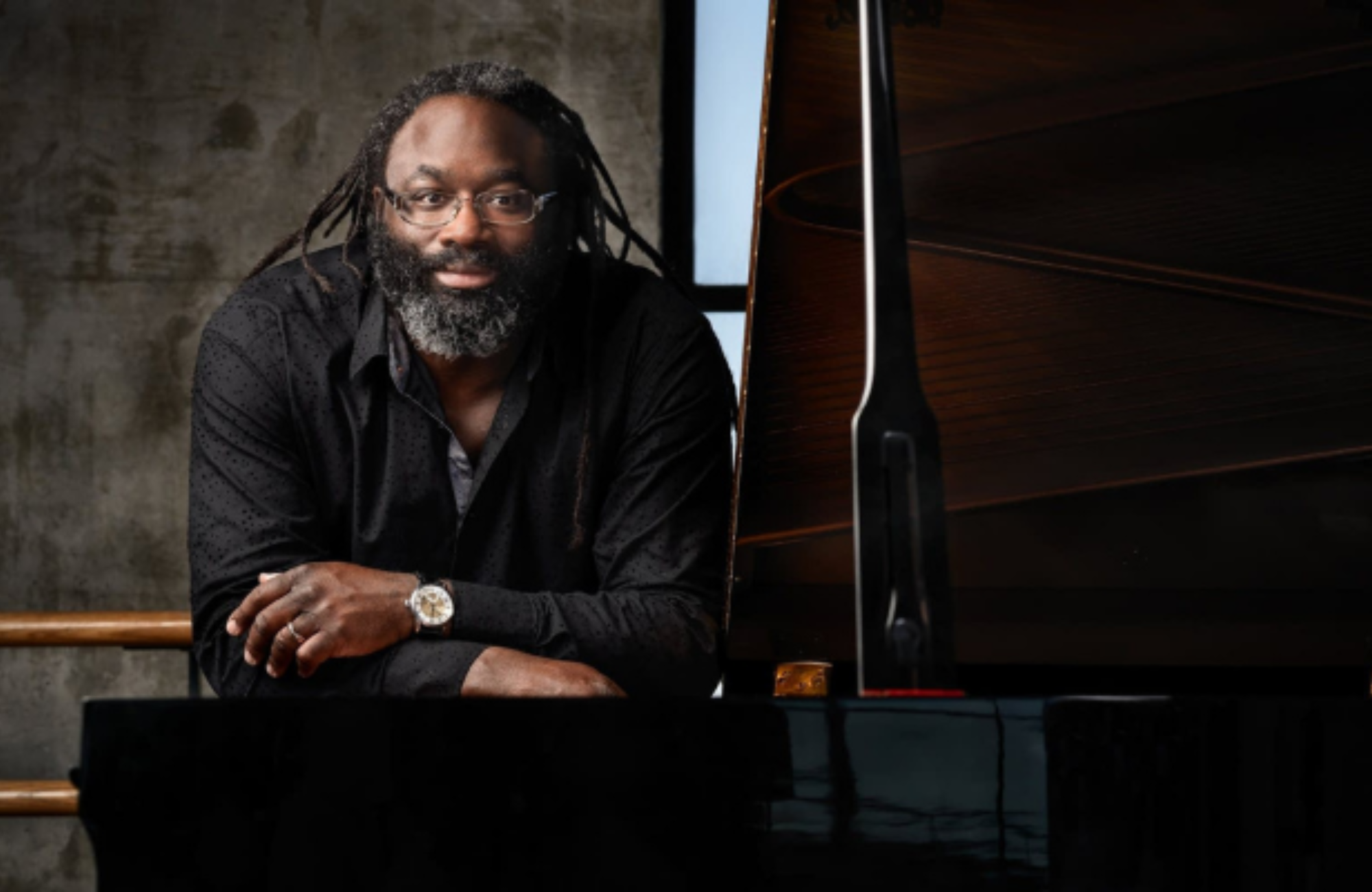Ring in the new year with Symphoria, performing the beautiful and moving Mother and Child by William Grant Still and Stravinsky’s masterful L’Histoire du Soldat. Tai Murray will be joining us via livestream to perform music of Bach.
*Due to current orange zone restrictions, ensemble size will be limited to 10 or less musicians on stage. We will return to full orchestra as soon as it is safe to do so.
PROGRAM
STILL: Mother and Child
BACH: Sonata No. 3 in C Major BWV 1005
STRAVINSKY: L’Histoire du Soldat
Click here to access our digital program book.
All programs and artists subject to change.
PROGRAM NOTES
Igor Stravinsky (1882–1971) wrote The Soldier’s Tale (L’Histoire du soldat) in 1918, a time eerily similar to ours—during a pandemic two decades into a new century. He had changed the course of classical music a few years earlier with The Rite of Spring, a brutal work calling for the kind of massive orchestra favored by Mahler and Strauss. But the war, the Russian Revolution, Stravinsky’s relocation to Switzerland, and eventually the pandemic made that kind of extravagance unrealistic—especially since the composer, no longer getting royalties from his Russian works, needed immediate income. So he found himself ...
Igor Stravinsky (1882–1971) wrote The Soldier’s Tale (L’Histoire du soldat) in 1918, a time eerily similar to ours—during a pandemic two decades into a new century. He had changed the course of classical music a few years earlier with The Rite of Spring, a brutal work calling for the kind of massive orchestra favored by Mahler and Strauss. But the war, the Russian Revolution, Stravinsky’s relocation to Switzerland, and eventually the pandemic made that kind of extravagance unrealistic—especially since the composer, no longer getting royalties from his Russian works, needed immediate income. So he found himself turning to music for smaller forces that could be performed more easily.
Still, Stravinsky remained an innovator, and The Soldier’s Tale is not “normal” chamber music. Rather, in a way, it’s a kind of orchestral work. In a way? Well, instead of employing a traditional chamber music group like a string quartet or wind quintet, Stravinsky assembled what we might call a shadow orchestra—that is, one that offers the outlines of a regular symphonic ensemble, without the real substance. Woodwind, brass, and string sections are each represented, but only by a pair of instruments, high and low; and the ensemble is rounded out by a single percussionist.
A shadow orchestra is especially appropriate for the piece, given the association of shadows with the supernatural, and especially the devil. (Indeed, the Devil in Stravinsky’s later opera The Rake’s Progress is named Nick Shadow). For The Soldier’s Tale started out as a theater piece, with three actors and a dancer, that recounts a supernatural fable adapted by C.F. Ramuz from the Russian folk tales collected by Alexander Afanas’ev. The story concerns, Joseph, a young soldier on leave, who is tricked by the devil to trade his violin for untold wealth. As he soon learns, however, in making the bargain, he’s irrevocably lost what really matters. He believes he’s spent three days teaching the devil to play the instrument but it’s actually been three years. As a result, his mother thinks him dead and his beloved has married someone else. Joseph eventually manages to trick the devil and win the violin back; and he uses the curative power of music (something which we’ve all increasingly come to appreciate during our own pandemic) to revive an ailing princess. Even after marrying her, though, he’s unable to accept what he has; he wants, in addition, what he used to have as well. He tries to outwit his nemesis and see his mother once again, but fails and loses everything. The devil, as always, has the last word. As does the percussionist, who ends the piece with what’s probably the first true percussion solo in the standard orchestral repertoire. As I said, Stravinsky remained an innovator.
The Soldier’s Tale reveals Stravinsky’s versatility in a number of ways. Most immediately, there’s a radical shift in idiom. Stravinsky’s big ballets—especially Petrushka and The Rite—were overpowering and richly colored works steeped in Eastern European folk music. The Soldier’s Tale is lighter, more brittle, and more ironic, and it takes much of its inspiration from popular dance music of the time (this is especially notable the the Tango, Waltz, and Ragtime that mark the princess’s recovery). Then, too, there’s Stravinsky’s dexterous handling of this ragtag collection of instruments, and even more, his ability to create a coherent work that draws on so many different musical traditions, from marches to Lutheran Chorales to ragtime.
Shortly after he finished The Soldier’s Tale, Stravinsky created a purely orchestral suite, which keeps almost all of the music but strips away the spoken text. That’s the version most commonly heard nowadays, and it’s the one that closes out our concert today.
Yet whatever we can say about the versatility of Stravinsky, it pales beside that of William Grant Still (1895–1978), whose Mother and Child (1943) opens our concert. Born in a small town in Mississippi, and raised in Little Rock, Still crossed any number of musical borders. In his early years he earned a living as a performer (he played oboe in the original production of Shuffle Along, widely considered the first African-American Broadway hit), as an arranger for pop, jazz, and blues artists (including Paul Whiteman, W.C. Handy, and Sophie Tucker), and as a radio conductor. Even after his career as a classical composer blossomed under the mentorship of such very different teachers as the conservative Howard Hanson and the avant-gardist Edgard Varèse, he continued to work in more popular areas such as music for film and television (including contributions to Gunsmoke).
He broke social boundaries as well. He was the first African-American to conduct a major American symphony orchestra, the first to have an opera staged by a major opera company, and more. Yet despite his numerous triumphs in Jim Crow America, despite his numerous awards, he lived his life under the cloud of racism. And even though his reputation is anchored in a vast classical output (which includes five symphonies, several operas, and a great deal of chamber and vocal music), his reputation, like that of many pioneering Black composers, has never matched the quality of his music.
Mother and Child is one of his smaller, more personal works—an arrangement for string orchestra of the central piece from a three-movement suite for violin and piano. Like the other two works in the set, it was inspired by the art of the Harlem Renaissance—in this case, a simple but poignant lithograph by Sargent Johnson. Harmonically rich, it has the spirit of a lullaby; yet it’s tinged (as is Johnson’s picture) with sadness, and ends without full resolution. This evening’s performance, by a small ensemble without a conductor, should capture its intimacy especially well.
Between these two works, we’ll hear solo selections performed by violinist Tai Murray. She was originally scheduled to perform the Tchaikovsky Concerto, but Covid restrictions have made that impossible. Instead, she’ll be playing…Well, in a season full of surprises, that will be one more surprise.
Peter J. Rabinowitz
Have any comments or questions? Please write to me at prabinowitz@ExperienceSymphoria.org
FEATURED ARTISTS
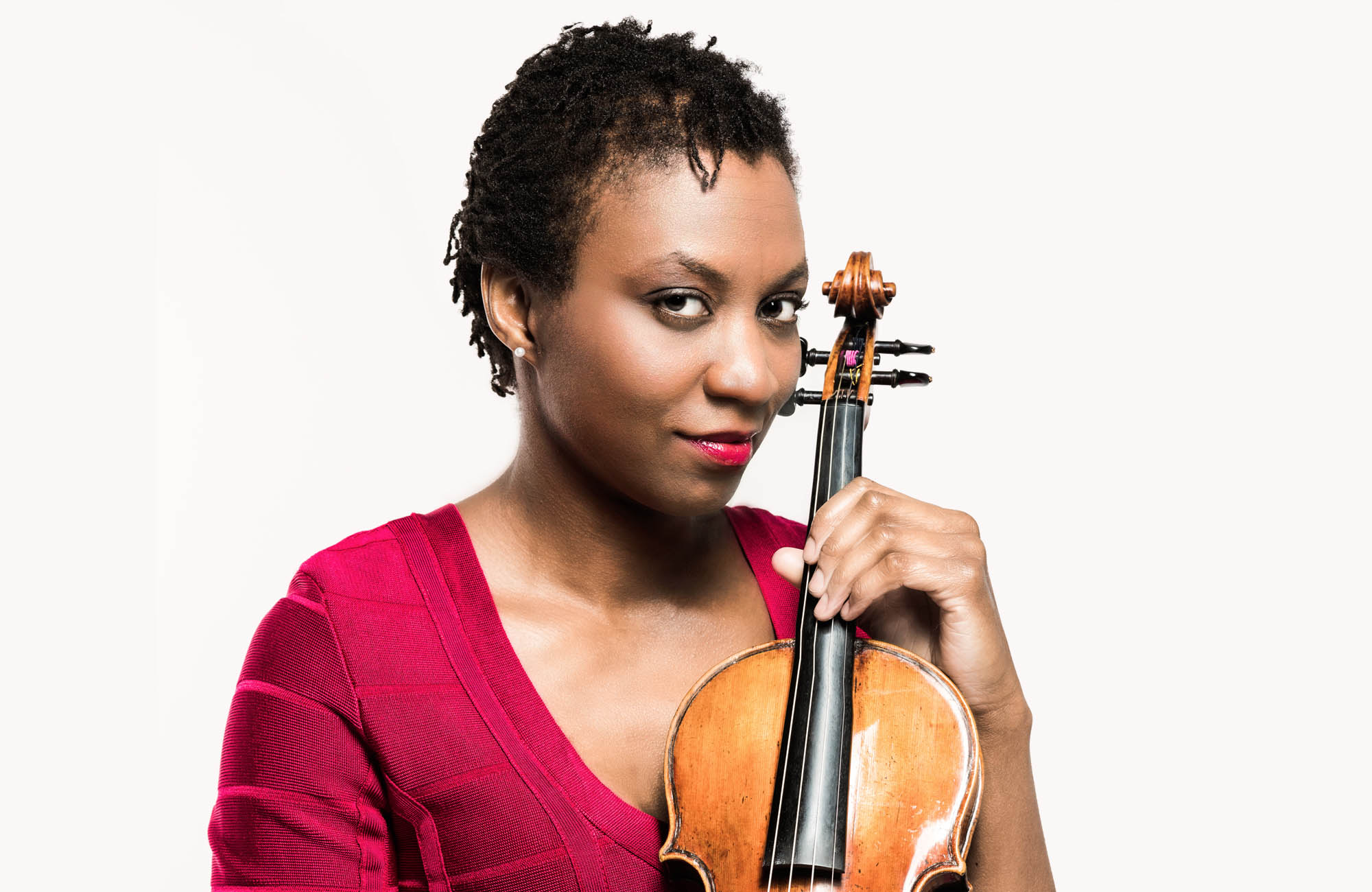
Described as “superb” by The New York Times, violinist Tai Murray has established herself a musical voice of a generation.“Technically flawless… vivacious and scintillating… It is without doubt that Murray’s style of playing is more mature than that of many seasoned players… “
(Muso Magazine)
...
Described as “superb” by The New York Times, violinist Tai Murray has established herself a musical voice of a generation.“Technically flawless… vivacious and scintillating… It is without doubt that Murray’s style of playing is more mature than that of many seasoned players… “
(Muso Magazine)
Appreciated for her elegance and effortless ability, Murray creates a special bond with listeners through her personal phrasing and subtle sweetness. Her programming reveals musical intelligence. Her sound, sophisticated bowing and choice of vibrato, remind us of her musical background and influences, principally, Yuval Yaron (a student of Gingold & Heifetz) and Franco Gulli. Winner of an Avery Fisher Career Grant in 2004, Tai Murray was named a BBC New Generation Artist (2008 through 2010). As a chamber musician, she was a member of Lincoln Center’s Chamber Music Society II (2004-2006).
She has performed as guest soloist on the main stages world-wide, performing with leading ensembles such as the Indianapolis Symphony Orchestra, Royal Liverpool Symphony Orchestra, and all of the BBC Symphony Orchestras. She is also a dedicated advocate of contemporary works (written for the violin). Among others, she performed the world premiere of Malcolm Hayes’ violin concerto at the BBC PROMS, in the Royal Albert Hall.
As a recitalist Tai Murray has visited many of the world’s capitals having appeared in Berlin, Chicago, Hamburg, London, Madrid, New York’s Carnegie Hall, Paris and Washington D.C., among many others.
Tai Murray’s critically acclaimed debut recording for harmonia mundi of Ysaye’s six sonatas for solo violin was released in February 2012. Her second recording with works by American Composers of the 20th Century was released by the Berlin-based label eaSonus and her third disc with the Bernstein Serenade on the French label mirare.
Tai Murray plays a violin by Tomaso Balestrieri fecit Mantua ca. 1765, on generous loan from a private collection.

Described as bringing an “artisan storyteller’s sensitivity… shaping passages with clarity and power via beautifully sculpted dynamics… revealing orchestral character not seen or heard before” (Arts Knoxville) Lawrence Loh enjoys a dynamic career as a conductor of orchestras all over the world.
After an extensive two ...
Described as bringing an “artisan storyteller’s sensitivity… shaping passages with clarity and power via beautifully sculpted dynamics… revealing orchestral character not seen or heard before” (Arts Knoxville) Lawrence Loh enjoys a dynamic career as a conductor of orchestras all over the world.
After an extensive two year search, Lawrence Loh was recently named Music Director of the Waco Symphony Orchestra beginning in the Spring of 2024. Since 2015, he has served as Music Director of The Syracuse Orchestra (formerly called Symphoria), the successor to the Syracuse Symphony Orchestra. “The connection between the organization and its audience is one of the qualities that’s come to define Syracuse’s symphony as it wraps up its 10th season, a milestone that might have seemed impossible at the beginning,” (Syracuse.com) The Syracuse Orchestra and Lawrence Loh show that it is possible to create a “new, more sustainable artistic institution from the ground up.”
Appointed Assistant Conductor of the Pittsburgh Symphony in 2005, Mr Loh was quickly promoted to Associate and Resident Conductor within the first three years of working with the PSO. Always a favorite among Pittsburgh audiences, Loh returns frequently to his adopted city to conduct the PSO in a variety of concerts. Mr. Loh previously served as Music Director of the West Virginia Symphony Orchestra, Music Director of the Northeastern Pennsylvania Philharmonic, Artistic Director and Principal Conductor of the Syracuse Opera, Music Director of the Pittsburgh Youth Symphony Orchestra, Associate Conductor of the Dallas Symphony Orchestra, Associate Conductor of the Colorado Symphony Orchestra and Music Director of the Denver Young Artists Orchestra.
Mr. Loh’s recent guest conducting engagements include the San Francisco Symphony, Dallas Symphony, North Carolina Symphony, Baltimore Symphony, Sarasota Orchestra, Florida Orchestra, Pensacola Symphony, Atlanta Symphony, National Symphony, Detroit Symphony, San Diego Symphony, Seattle Symphony, National Symphony (D.C.), Utah Symphony, Rochester Philharmonic, Indianapolis Symphony, Calgary Philharmonic, Buffalo Philharmonic, Albany Symphony and the Cathedral Choral Society at the Washington National Cathedral. His summer appearances include the festivals of Grant Park, Boston University Tanglewood Institute, Tanglewood with the Boston Pops, Chautauqua, Sun Valley, Shippensburg, Bravo Vail Valley, the Kinhaven Music School and the Performing Arts Institute (PA).
As a self-described “Star Wars geek” and film music enthusiast, Loh has conducted numerous sold-out John Williams and film music tribute concerts. Part of his appeal is his ability to serve as both host and conductor. “It is his enthusiasm for Williams’ music and the films for which it was written that is Loh’s great strength in this program. A fan’s enthusiasm drives his performances in broad strokes and details and fills his speaking to the audience with irresistible appeal. He used no cue cards. One felt he could speak at filibuster length on Williams’ music.” (Pittsburgh Tribune)
Mr Loh has assisted John Williams on multiple occasions and has worked with a wide range of pops artists from Chris Botti and Ann Hampton Callaway to Jason Alexander and Idina Menzel. As one of the most requested conductors for conducting Films in Concert, Loh has led Black Panther, Star Wars (Episodes 4-6), Jaws, Nightmare Before Christmas, Jurassic Park, Casablanca, The Wizard of Oz and Singin’ in the Rain, among other film productions.
Lawrence Loh received his Artist Diploma in Orchestral Conducting from Yale, his Masters in Choral Conducting from Indiana University and his Bachelor of Arts from the University of Rochester. Lawrence Loh was born in southern California of Korean parentage and raised in Carlisle, Pennsylvania. He and his wife Jennifer have a son, Charlie, and a daughter, Hilary. Follow him on instagram @conductorlarryloh or Facebook at @lawrencelohconductor or visit his website, www.lawrenceloh.com

Described by the Baltimore Sun as a “beautifully lyrical” conductor, Paul McShee, Artistic Director of Instrumental Studies and Assistant Professor at Binghamton University, is known for the “energy and sincere expression” of his performances. Equally at home on the podium and in the opera pit, Dr. McShee is sought ...
Described by the Baltimore Sun as a “beautifully lyrical” conductor, Paul McShee, Artistic Director of Instrumental Studies and Assistant Professor at Binghamton University, is known for the “energy and sincere expression” of his performances. Equally at home on the podium and in the opera pit, Dr. McShee is sought after as a conductor for opera productions in the US and Europe. He was a staff conductor for the Baltimore Opera Project, guest conductor for La traviata and Madama Butterfly at Paul Hamlyn Hall in London, and music director of the PopUp Opera Program in Edinburgh, Scotland.
Paul has conducted the Baltimore Symphony Orchestra, the Baltimore Chamber Orchestra, the Boulder Chamber Orchestra, the London Paradisal Players, L’Orchestre QuiPasseParLà, L’Orchestre Band-Son, the Philharmonie Mihail Jora, and the Bohuslav Martinu Philharmonic.
A champion of new music, and works of underrepresented composers, Paul is currently preparing a collected edition of the instrumental works of Margaret Bonds. Additionally, he has worked with composers including Kenneth Fuchs, Avner Dorman, Anna Clyne, and Nathan Fletcher.
He holds the DMA in conducting from the Peabody Institute of the Johns Hopkins University and a MM from the University of Connecticut. He has served on the faculties of the University of Minnesota, the University of Connecticut, and Binghamton University. His current research concerns the intersections between philosophy and the music of Brahms, Wagner, and Mahler.
Paul studied under Marin Alsop, Gustav Meier, and Harvey Felder. His principal flute teachers were Emmanuel Pahud, Verena Bosshart, and Teresa Bowers.


